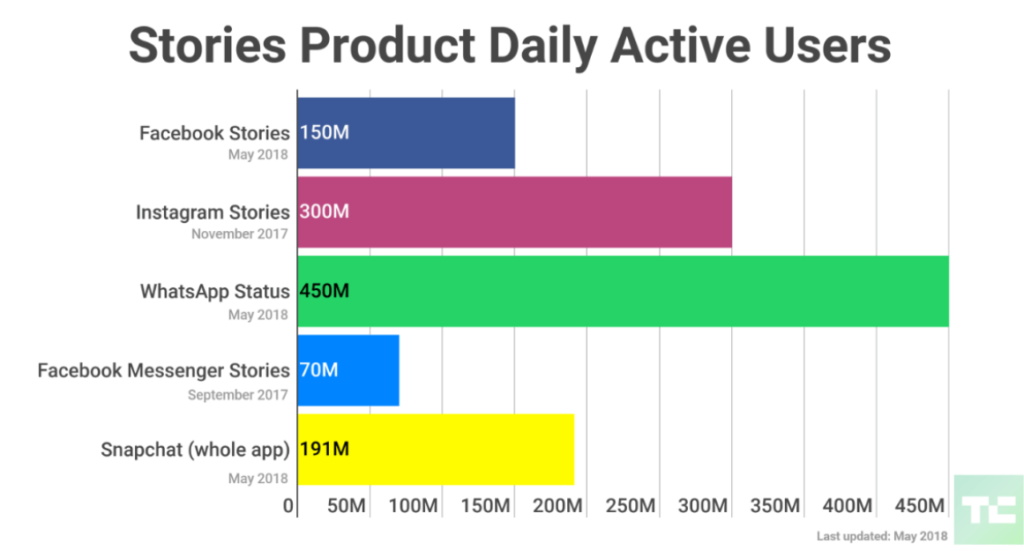What Is Facebook Stories?
With new technology, comes new opportunities. Following the increased popularity of the “story format” originated by Snapchat, Facebook roll-out their own in-app version called “Facebook Stories”. Going against the social media norm of preserving and saving moments, Facebook Stories take a much more temporary approach and allow its users to generate photo and video collections that can be viewed up to two times and disappear after 24 hours.
While posting content that will only last for one day may seem counterintuitive in a marketing sense, what makes the temporary nature of “story format” so widely used is that it emulates our natural social behavior and psychology more than any other social media network. Similar to how we live our day-to-day lives, having casual conversations with co-workers at the water cooler or converse with a stranger we just met, these moments of communication inevitably disappear. The lack of permanence, visually-appealing pithy content and the ease and speed of sharing information in a “story format” may be the key reason why this trend is growing in popularity. In fact, Facebook chief product officer, Chris Cox, made the prediction that “the Stories format is on the path to surpass feeds as the primary way people share things with their friends (in 2020).”

Source: TechCrunch
How Does Facebook Stories Work?
Step 1: Access the camera
Creating stories is best done on mobile using Facebook’s in-app features. Using the Facebook app, you will need access to your mobile camera by tapping the camera icon.
Step 2: Create your content
Now here is the fun part! Once you have the camera open, you can record a quick video or photo and then decorate and edit the content with the available filters and customization features, including adding your geolocation. This can be done in-app or by using third-party Story Creators.
Step 3: Share your story
Once you’re done with the story you’ve created the next step is to share it. Tap on the arrow icon in the center of the screen and then select ‘Your Story’ and tap the send button on the bottom right. These stories will only display for 24 hours and will not show up in a users News Feed or timeline. The key way to get your stories seen is to first share it to your own social network and incentivize your network to share the story (whether because it was entertaining or informative, etc.)
If you’re an admin to your own business Facebook Page, you will also be able to share your story from your Page.
Step 1: Open up Facebook’s mobile app on iOS or Android.
Step 2: Go to the timeline of your Page for which you are an admin of.
Step 3: Tap “Create Story”.
Taking Advantage of Camera-First Communication and Original Content
Facebook is going to great lengths to get their users to share Stories, especially since the way people share and connect is changing. Communication via social media is quickly becoming more real-time and visual which is exactly the appeal of Facebook Stories. In-app creative tools, such as filters, polls, camera effects, geotagging, and adding music give its users a lot of flexibility when it comes to creating original content. The temporary nature of Facebook Stories is also forgiving to content that is not so polished. As long as the stories are interesting enough to catch people's attention it will still have a good chance of being seen and/or shared.
With any social media marketing strategy, the name of the game is to keep your viewers engaged. For businesses looking to incorporate Facebook Stories into their marketing, a preferably data-driven strategy will still be needed. Here are a few tips to help establish your Facebook Stories strategy:
Step 1: Set Clear and Specific Goals
In social media marketing, the name of the game is to keep your viewers engaged. With every piece of content created, it will be most helpful to always tie it back to your goals. Be sure to set realistic growth goals.
Step 2: Choose Your Metrics
As you create your Facebook Story campaigns, be sure to identify the metrics you’ll track. By doing so, you’ll be able to identify what content works wells and aligns with your established goals. The data you collect can help you stay on track to create relevant content.
Step 3: Develop Time-Specific Campaigns
Set a specific time range for your Facebook Story campaigns. By setting a time limit, you’ll be able to gather data once the campaign has ended and analyze your results.
Step 4: Experiment with the App
Facebook is always looking to innovate its platform. Take advantage of its ever evolving in-app tools and have fun with it. Testing different kinds of content campaigns and experimenting with different tweaks here and there will help you identify what works and what doesn’t. The more you experiment the more you’ll be able to adapt positive results into your strategy.
Jessylyn Los Banos is a content developer for law firms at Custom Legal Marketing.
